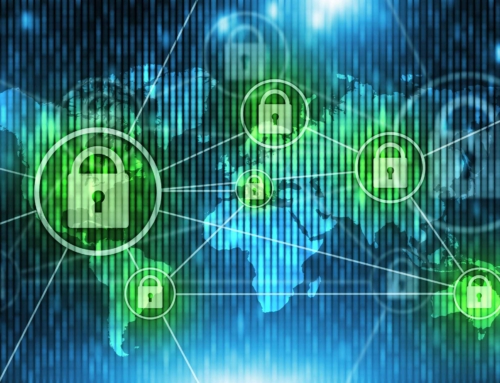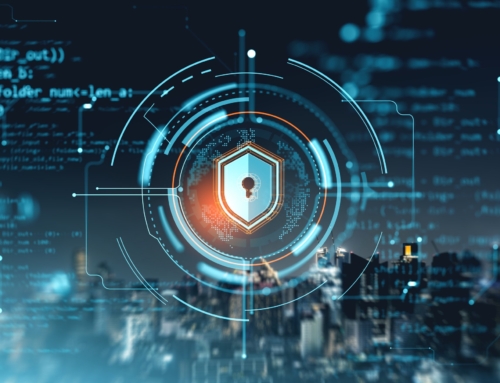Navigating Legal Compliance After a Ransomware Incidents
Understanding the Threat Landscape: The Rising Danger of Ransomware Attacks
Legal compliance after ransomware is no mere formality; it is a critical component of an organization’s response to a rapidly growing cyber threat. Ransomware attacks have surged in recent years, holding data hostage and disrupting operations across countless industries. As IT management and network services providers, we at Alvaka are acutely aware of the dangers posed by such threats to the integrity of our clients’ systems and the confidentiality of their data. Our proactive measures are designed to combat and mitigate the impact of these malicious attacks.
The Intersection of Cybersecurity and Law: Legal Requirements Following a Ransomware Breach
Cybersecurity is not just a matter of technology; it intertwines intricately with legal ramifications that cannot be overlooked. When a ransomware incident occurs, it triggers a variety of legal obligations that organizations must adhere to. Failure to comply can result in significant penalties, adding to the financial strain caused by the attack itself. As a firm, we emphasize the importance of understanding these requirements as part of a comprehensive incident response plan to ensure we are not just restoring operations but also safeguarding our clients’ legal interests.
Legal Compliance After Ransomware: Navigating Regulations and Minimizing Liabilities
Responding to a ransomware attack extends beyond the technical aspects of isolating the incident and recovering data. A vital part of our response involves navigating the complex web of regulations that come into play. Timely notification to authorities, affected clients, and possibly the public, are not just courtesy but often a legal mandate. Our approach focuses on helping to minimize the liabilities our clients may face, by ensuring that all legal protocols are thoroughly followed, from reporting to evidence preservation.
Immediate Steps to Legal Compliance After a Ransomware Incident
Notification and Reporting: Abiding by Obligations in the Wake of a Breach
When facing a ransomware attack, our first priority is to meet all legal obligations regarding notification and reporting. Whether it involves alerting regulatory agencies or contacting affected parties, we at Alvaka understand the urgency of transparency following a breach. Immediate, clear communication not only satisfies legal requirements but also helps to maintain trust with stakeholders and clients.
Preservation of Evidence: Legal Protocols for Documentation and Forensics
We also prioritize the preservation of evidence. This step is critical for ongoing investigations and future legal compliance after ransomware incidents. Our team meticulously documents all aspects of the breach and engages in responsible forensics, always being careful to maintain the integrity of the data to assist in any potential legal proceedings.
Legal Review and Response Planning: Working with Counsel to Address Ransomware Fallout
Engaging with legal counsel is essential in navigating the aftermath of a ransomware attack. At Alvaka, we collaborate with seasoned cybersecurity lawyers to review the incident and develop an effective response plan. This strategic alignment ensures we address all legal compliance after ransomware incidents and minimize liabilities.
Long-Term Legal Strategies to Mitigate Future Ransomware Risks
Incorporating Compliance into Recovery and Response Plans
Working on long-term legal strategies has proven to be one of the most effective ways to reduce future risks. We incorporate legal compliance into our recovery and response plans, ensuring that our approach to ransomware threats is thoroughly aligned with current regulations and standards. We continuously refine these plans to stay ahead of evolving threats and legal requirements.
Legal and IT Collaboration: Implementing Robust Security Policies and Trainings
For us, the alignment between legal and IT departments is crucial. By implementing robust security policies and regular employee training, we create a more resilient organizational environment. Our methodical training sessions ensure that our staff remains aware of the best practices for preventing and responding to cyber threats.
Legal Compliance After Ransomware: Evaluating and Updating Incident Response Strategies
Evaluating and updating our incident response strategies is a core aspect of maintaining legal compliance after ransomware incidents. We regularly assess the effectiveness of these strategies with an aim to make any essential improvements, ensuring that our response to any potential threats is swift and comprehensively up to legal standards.
Case Studies and Best Practices: Learning from Past Ransomware Attacks
- Analyzing past ransomware attacks provides valuable insights into best practices and areas for improvement in cybersecurity measures and response protocols.
- We use these case studies to inform our clients about the practical applications of cybersecurity strategies and the importance of legal compliance in both prevention and action phases.
- By learning from experience—theirs and ours—we enhance our ability to effectively combat future ransomware threats and remain legally compliant.
Did you know? After a ransomware attack, companies must report to relevant authorities—often within 72 hours—to comply with laws like the GDPR or risk hefty fines.
Securing Legal Compliance After Ransomware: A Continuous Journey
In addressing the complexity of ransomware recovery, our commitment to safeguarding your business extends beyond immediate technical response. Legal compliance after ransomware attacks is not a one-off procedure but an ongoing process demanding vigilance and dedication. Our strategy has consistently proven that prevention, paired with rapid and legally-compliant response mechanisms, is vital in mitigating damages and enhancing resilience against future threats.
Solidifying Legal Compliance and IT Synergy in Ransomware Defense
As we navigate the aftermath of a ransomware incident, the integration of legal expertise with IT security becomes central to our action plan. We foster an environment where legal compliance after ransomware is instilled in every layer of our security infrastructure. Regular assessments and updates to our policies ensure that we’re not only reacting to current threats but preemptively strengthening our defenses to ward off potential legal and cyber risks.
Legal Compliance After Ransomware: A Blueprint for Mitigating Risks
The synergy between legal know-how and IT proficiency has informed our formulation of a comprehensive blueprint tailored to mitigate risks associated with ransomware. We outline clear protocols and remediation steps that align with statutory responsibilities, thereby reducing liabilities and setting a standard for business preparedness in the face of cyber adversity.
Our pursuit of excellence in legal compliance after ransomware does not stop at mere adherence to regulations. We view it as an opportunity to bolster trust with our clients, stakeholders, and the broader business community. We remain steadfast in our dedication to delivering the highest level of service, ensuring that your journey through the complex landscape of cyber threats is met with unwavering support and expertise. Trust in our acumen to guide you through these turbulent waters, not only towards recovery but towards a fortified future.
FAQ
What immediate actions should we take following a ransomware incident? ▼
In the event of a ransomware incident, our immediate actions include isolating the affected systems, initiating a forensic investigation to preserve evidence, and notifying relevant authorities and affected parties in accordance with legal requirements. Additionally, we must assess the scope and impact of the breach and begin developing a response plan with legal counsel.
Are there specific legal obligations for reporting a ransomware attack? ▼
Yes, legal obligations for reporting ransomware attacks vary depending on jurisdiction and the nature of the data involved. Generally, we are required to report the attack to law enforcement and notify affected individuals, especially if personal data has been compromised. Therefore, we must stay informed about the reporting requirements relevant to our organization’s location and sector.
How do we preserve evidence following a ransomware attack? ▼
Preserving evidence after a ransomware attack involves meticulous documentation, securing logs, and maintaining the integrity of affected systems. Engaging forensic experts can ensure that evidence is collected in a manner that meets legal standards while also aiding in understanding the attack’s mechanisms, which is crucial for preventing future incidents.
Why is it important to work with legal counsel after a ransomware breach? ▼
Working with legal counsel is essential as it ensures that our response to a ransomware breach is in line with legal and regulatory standards. Counsel provides guidance on notification deadlines, legal liabilities, and coordinating with law enforcement, all of which help us navigate the complexities following a cyber incident.
What are some long-term legal strategies for mitigating ransomware risks? ▼
Long-term legal strategies include incorporating compliance requirements into our incident response plans, ensuring regular security policy updates, and conducting ongoing employee training on cybersecurity practices. Additionally, establishing a strong legal framework for our cybersecurity initiatives is key to minimizing the risk of future ransomware attacks.
How do legal and IT departments collaborate to prevent ransomware? ▼
Our legal and IT departments collaborate by creating comprehensive security policies that comply with legal standards, conducting joint risk assessments, and aligning IT security measures with legal requirements. This collaboration is reinforced through regular communication and updates on the evolving cybersecurity landscape and legal regulations.
What type of training can help minimize ransomware threats? ▼
Providing cybersecurity awareness training to all employees is vital, as staff can often be the first line of defense against ransomware attacks. Our training programs include identifying phishing attempts, secure handling of sensitive information, and the importance of regular software updates and password management.
How often should we evaluate and update our incident response strategy? ▼
We should regularly evaluate and update our incident response strategy to adapt to new threats and ensure compliance with evolving legal requirements. Ideally, this evaluation should occur at least annually, or more frequently following significant changes in our operational environment or after major incidents.
Can you provide an example of a past ransomware attack from which we can learn? ▼
One notable example is the WannaCry attack of 2017, which impacted organizations worldwide and emphasized the importance of keeping systems patched and updated. It highlighted the need for robust backup strategies and the dangers of delaying urgent security updates for critical systems.
How does legal compliance benefit our overall cybersecurity posture? ▼
Legal compliance not only helps us avoid penalties and legal issues after a ransomware attack, but it also strengthens our overall cybersecurity posture by ensuring we maintain high standards for data protection and are prepared to handle and respond to cyber threats effectively and efficiently.








 Smoke testing is a term used to describe the testing process for servers after patches are applied.
Smoke testing is a term used to describe the testing process for servers after patches are applied.  This is a basic cost calculator for you to compute your typical monthly cost for patching your servers, PCs, laptops, tablets and associated application software. It also forms the basis for you to begin calculating your Return on Investment for software patching, or for comparison with alternatives to the manual process of patching operating systems and application software—such as Patch Management as a Service, also known as Vulnerability Management as a Service.
This is a basic cost calculator for you to compute your typical monthly cost for patching your servers, PCs, laptops, tablets and associated application software. It also forms the basis for you to begin calculating your Return on Investment for software patching, or for comparison with alternatives to the manual process of patching operating systems and application software—such as Patch Management as a Service, also known as Vulnerability Management as a Service.